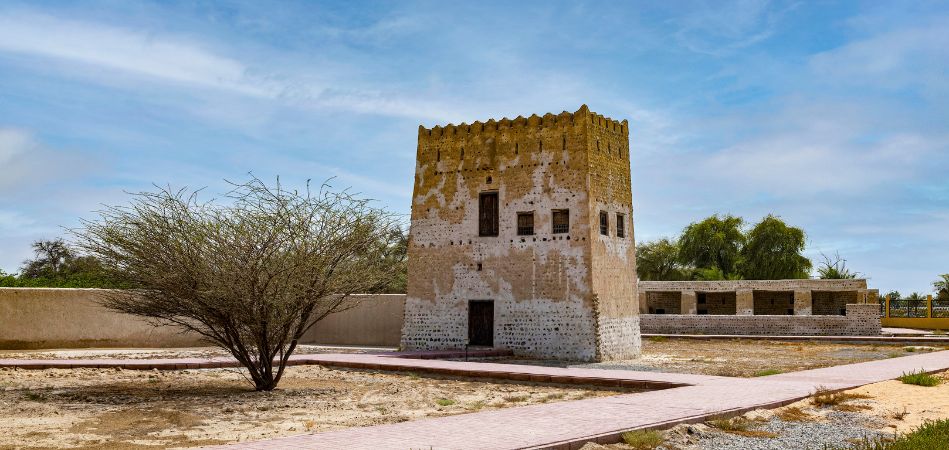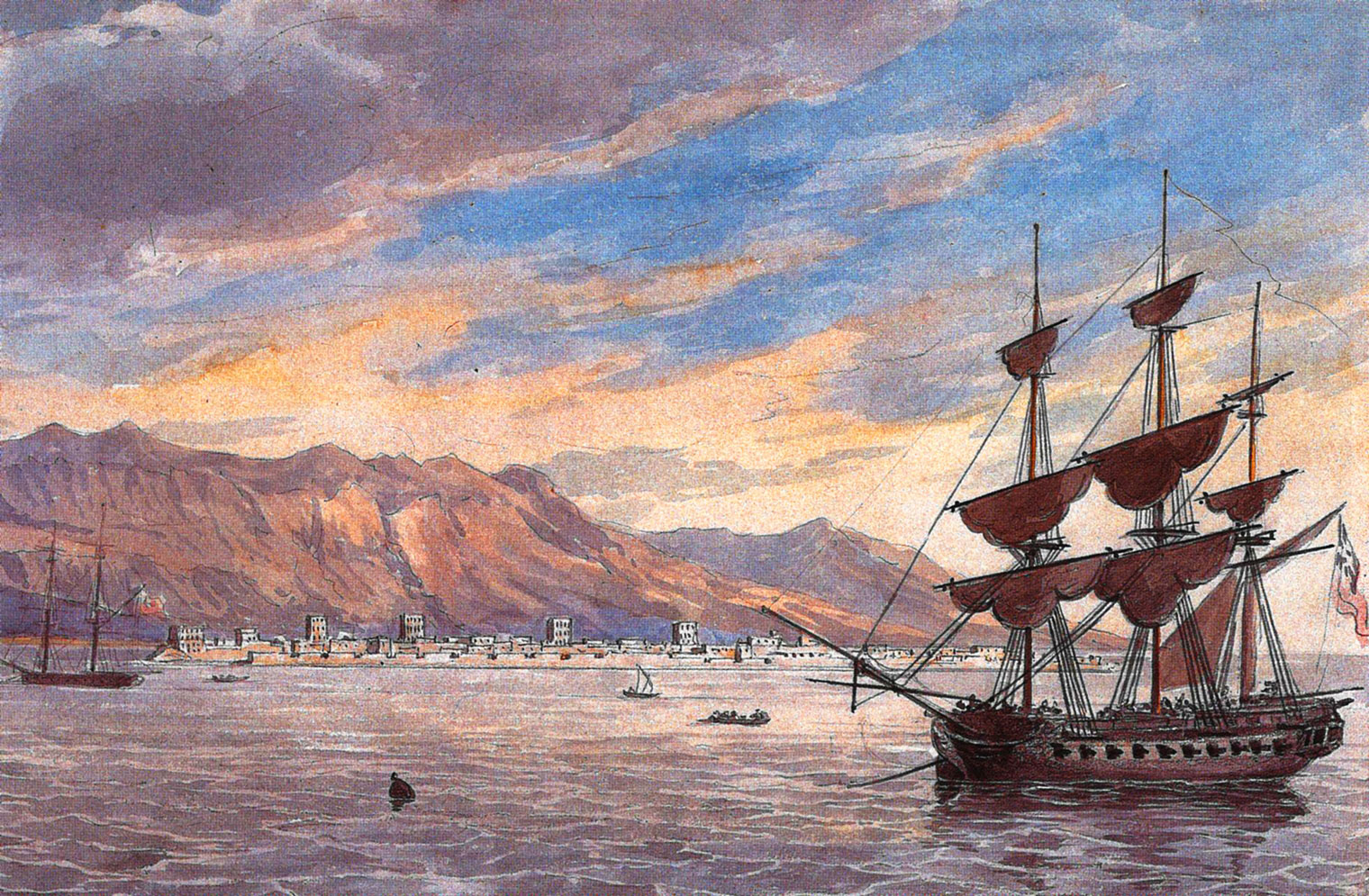
Ras Al Khaimah’s rich history, heritage and culture can be seen in full in the other sections of this website. Its heritage also comes from its unique geographical features – mountains, coastal beaches, mangroves and the desert – along with its strategic location at the mouth of the Arabian peninsula. With history this old comes traditions and artforms that are passed on from one generation to the next. These can be seen in the emirate’s exquisite folklore, folk music and dance that express the local social, ethical and aesthetic values.
Ras Al Khaimah is mainly a tribal society, with most of its local population belonging to different tribes, be it mountain tribes, sea tribes and desert tribes. Each of these main tribes has several tribes under its ‘family name’, and they can be differentiated from one another due to their dialects. The people of Ras Al Khaimah, including the various tribes and the significant historical figures, have been a part of the rich history of the Emirate.

As the British strengthened their foothold in Arabia, they established a Political Residency in the Gulf, with the main aim of safeguarding Britain’s imperial interests and the land and sea routes to India. At the time, the Qawasim had become successful merchants and the most powerful local tribe, challenging Oman’s maritime dominance. Britain had allied with the Omanis to ward off any potential French attacks and led to a conflict of interest with the Qawasim, who viewed the Brits with suspicion. Furthermore, Britain’s ambition to control the trade routes exacerbated the relationship between the two powers.
In 1806, the British signed an agreement with the Qawasim, in which both parties agreed they would respect each other’s property for peace to prevail; this accord marked the beginning of formal relations with the British in this region. However, the Gulf was far from peaceful, with frequent attacks on each other’s ships, which increased over time. To retaliate, the British embarked on a naval campaign in 1809 against the Qawasims. Hostilities between the two powers continued for another ten years, and finally in 1819, the British launched a naval expedition that razed Ras Al Khaimah to the ground. With no one left to challenge their dominion of the Gulf waters, the British imposed the General Maritime Treaty of 1820 on the rulers of the coastal emirates. Signed at the historic Falayah Fort in Ras Al Khaimah, the treaty gave the British forces a blanket right to monitor and govern the seas of the Arabian Gulf. This truce agreement also laid the foundation of the British protectorate in the region that lasted until December 1971, and the area gained the moniker, Trucial States.

The waning of European power in the Gulf, along with the decline of Omani and Persian states following the Omani-Persian wars in 1720, contributed to the rise of the Qawasim. They set up their bases at Julfar or Ras Al Khaimah and Sharjah and also controlled other ports of strategic importance along the Arabian coast, including Umm Al Quwain, Al Hamra, Al Rams, Buhabil, Ajman, Shanas, Khorfakkan and Khor Kalba. Their influence also extended to ports of Lengeh, Luft, Kunk and Ras Al Heti on the Persian side of the Gulf. They controlled the Gulf, which meant that they played a crucial part in dictating matters relating to regional politics and other affairs during the eighteenth century.

During the Islamic Golden Age, Muslim traders dominated commerce by land and sea – especially in the Indian Ocean, the Red Sea and the Mediterranean. However, this changed with the decline of the great Islamic empires and the arrival of the Portuguese. The Portuguese presence also caused a reduction in business for Arab merchants, with them fighting for hegemony over commerce in the area. They especially wanted to control the spice trade, which was, for centuries, dominated by prominent Arab mariners who came from the coastal Emirates and Oman.
The Portuguese reached the height of power by 1560, however, their hold on Arabia gradually started reducing by the seventeenth century, mainly due to the ongoing indigenous resistance. Numerous uprisings had taken place along the Arabian peninsula, of which the major revolts took place in 1521, 1526, 1602 and 1622. The 1622 rebellion is of particular significance as it marked the symbolic defeat of the Portuguese Empire, as an Anglo-Persian coalition recaptured Hormuz from the Portuguese. A few years later, the Ya’arabi dynasty from Oman succeeded in ousting them from Julfar and Dibba in 1633; from Sohar in 1643; and from Muscat in 1650.

Islam came to Arabia through envoys from Prophet Mohammed (PBUH) who arrived in the regionin AD630. Dibba, inpresent-day Fujairah, was the site of one of the major battles of the Ridda Wars (or Wars of Apostacy launched by Caliph Abu Bakr against Arabian rebels) after Prophet Mohammed’s death.The defeat of there be ls in this battle asserted the dominance of Islamin the Arabianpeninsula. Moreover, Julfar (present-dayRasAlKhaimah) was used in AD637 as as tag in gpost by the Caliphate in their conques to fthe Sasanian EmpireinIran.
This ushered in an age of the Caliphate on both sides of the Arabian Gulf – the Umayyad Caliphate (AD661–750) and the Abbasid Caliphate (AD750–1258), which succeeded in unifying the various Islamic tribes and people sin Arabia. This era is considered to be the Islamic Golden Age due to numerous cultural, social, scientific and economic achievements. This era is of particular importance in RasAlKhaimah’shistory. It during this time that Julfars treng the ned its position as one of Arabia’s most important trading hubs, mainly possible because of the unification of several Islamic empires, which led to the expansion of trade and tradenet works.

Ras Al Khaimah’s rich past consists of over 7,000 years of continuous human activities, covering all archaeological and historical periods. A unique geographical combination of high rising mountains, fertile plains, lagoons and the Arabian desert created a diverse environment for human settlement.







